12/1/08 What We Talk About When We Talk About Setbacks
They say a picture is worth a thousand words. For the residents of Dodge and Fond du Lac Counties who are now forced to live this close to 400 foot wind turbines, we can guess what some of those words might be. They didn't have a wind ordinance with a setback to protect their families, their homes and their property values.
If you live in Wisconsin, unless your township gets working on a wind ordinance, you may soon be saying some of these thousand words yourself. Want some help getting started? Click here to contact us! Wisconsin Tax-Payers for a Better Renewable Energy Plan are ready to help!
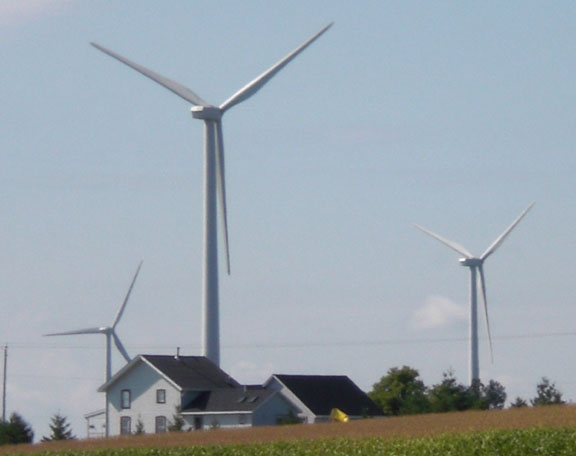
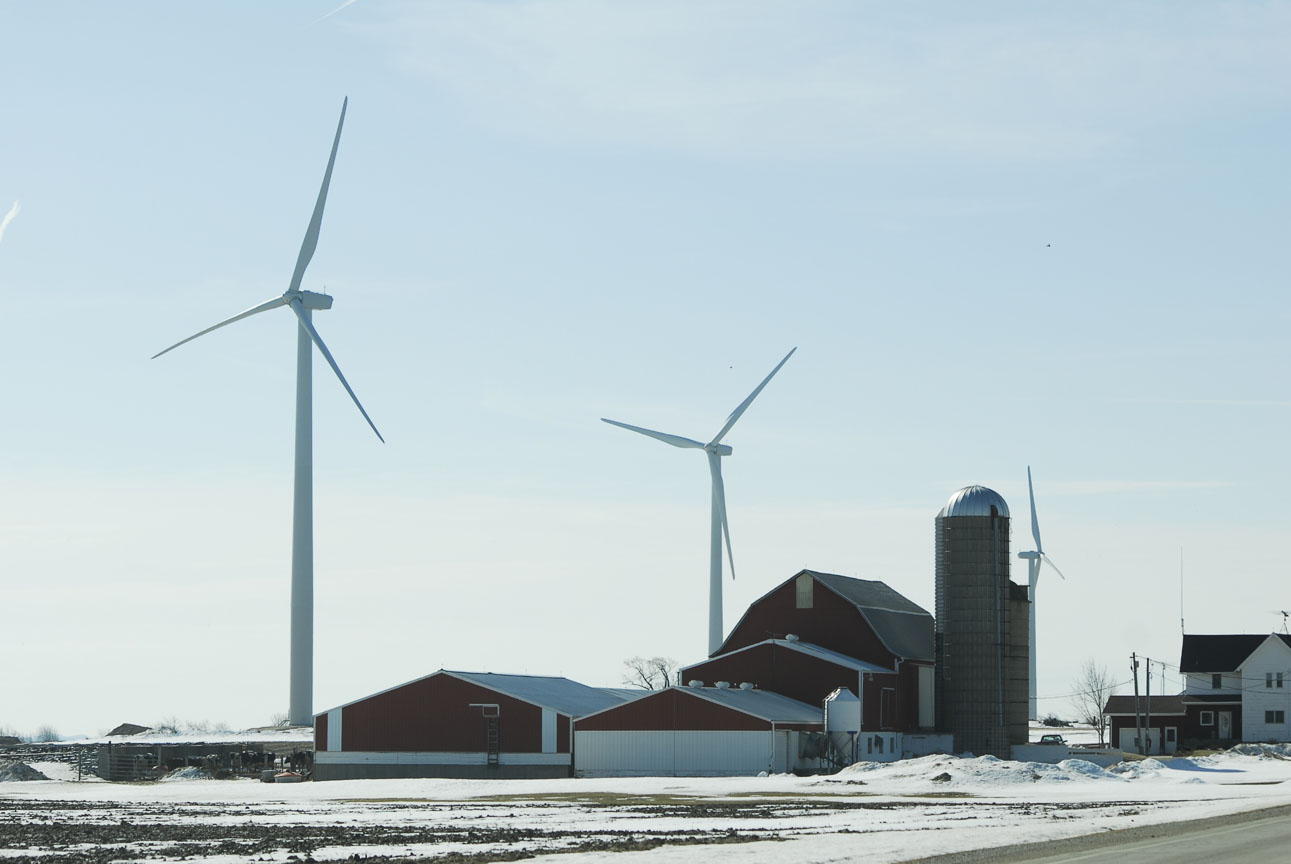
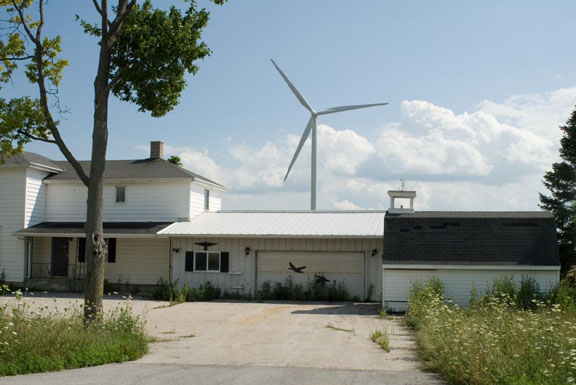
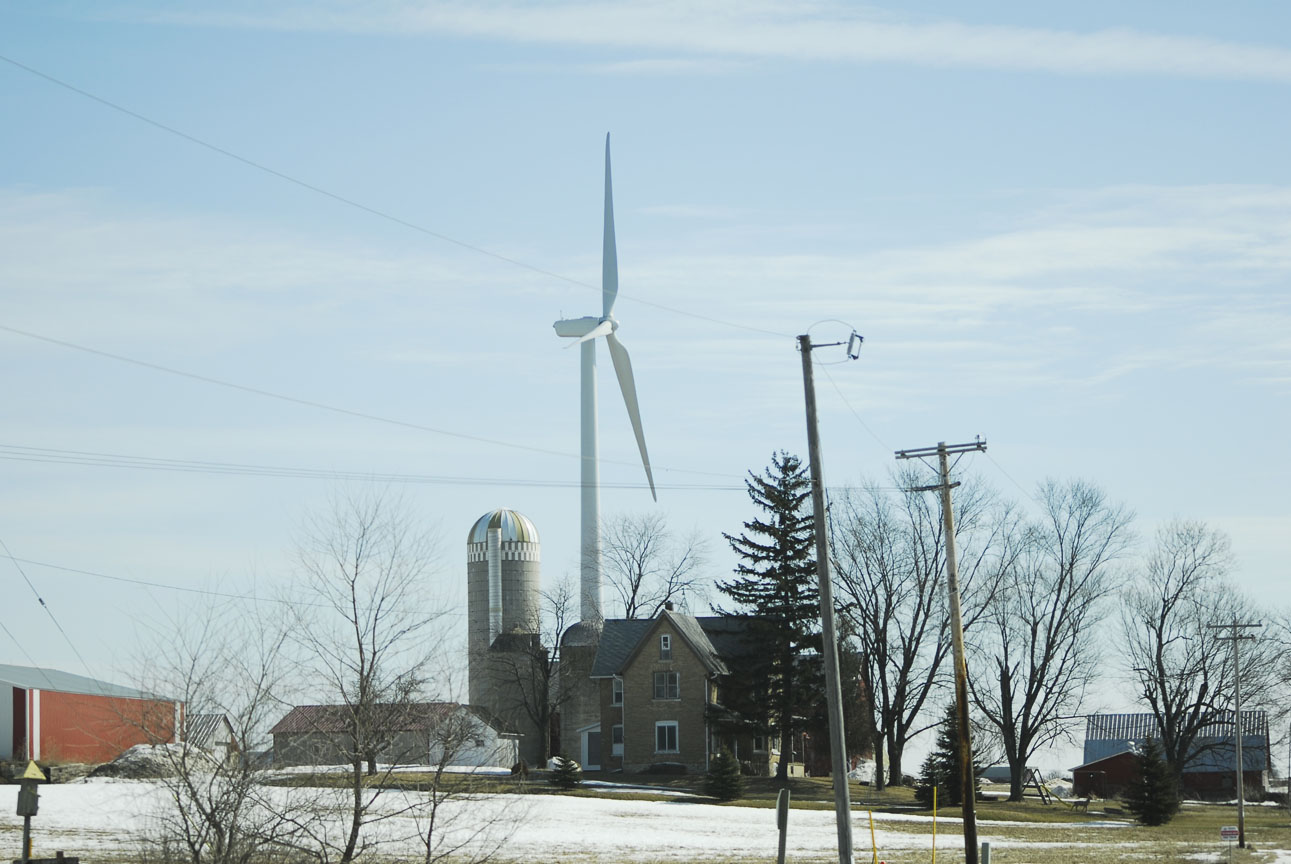
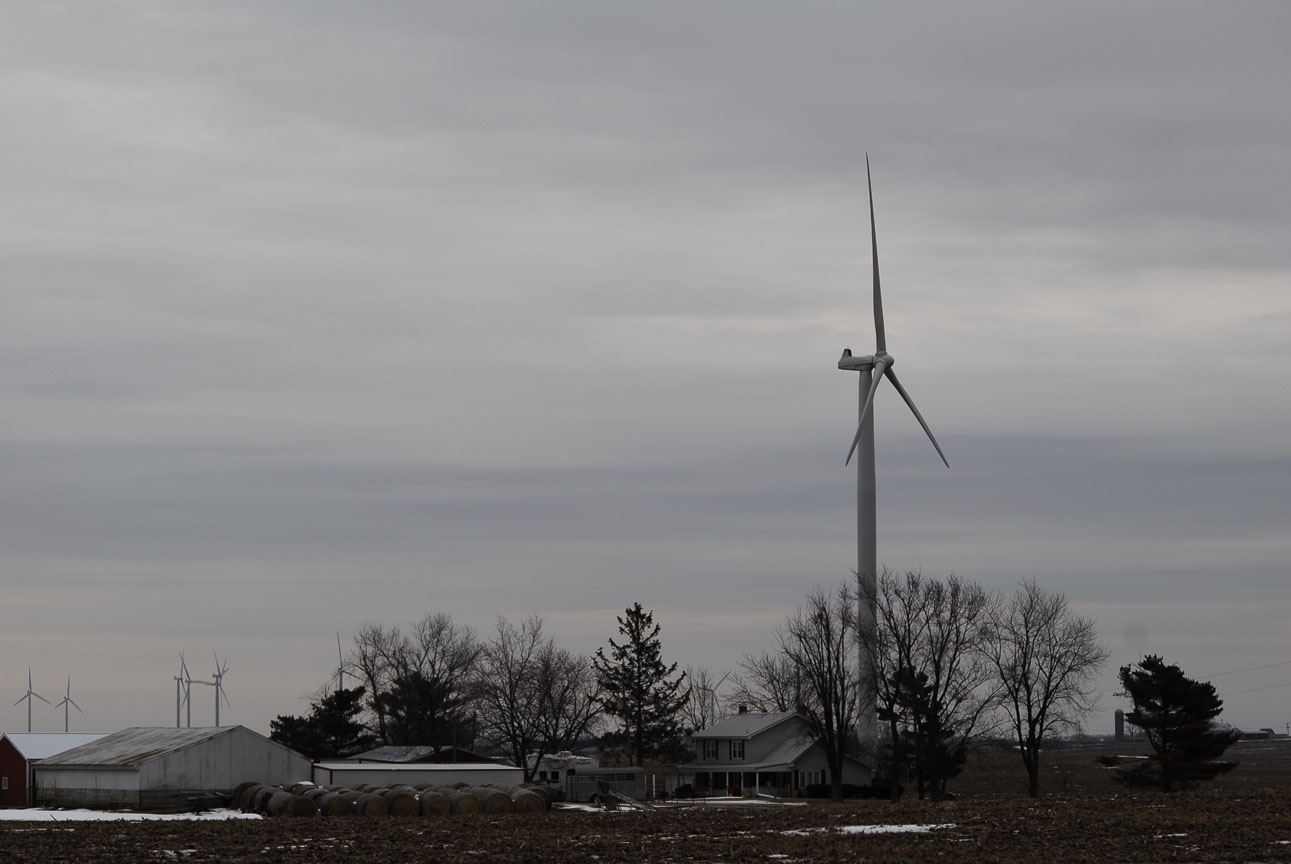
11/18/08 READ ALL ABOUT IT! Union Township and the Wind Ordinance that May Save Rock County

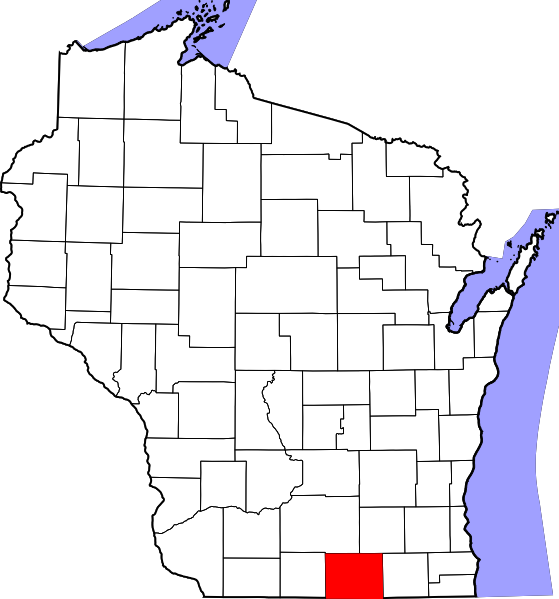
UNION TOWNSHIP, ROCK COUNTY, WISCONSIN
Union Town board unanimously approves large wind ordinance including comprehensive sound level limits and safety setbacks
On November 13, the Union town board unanimously voted to adopt regulations governing noise limits and setbacks pertaining to industrial scale wind turbines.
With this vote, the board brought to a close a controversial issue involving the safe placement of industrial turbines within the town of Union. The vote comes just months before the expected intense political wrangling by some members of the State legislature who seek to assign all wind siting authority to the Public Service Commission, leaving local governments out of the process.
" I would like to see more control at the local level" said Union Town Board Chairman Donald Krajeck. "Every local situation is different and has to be looked at on its own."
And that's exactly what Union is trying to accomplish, said Tom Alisankus, a municipal judge and member of the town of Union's Large Wind Study Committee. "This ordinance could empower other small municipalities abound the state. There is considerable pressure on communities to follow the State's recommendations of turbine placement. Our research found the standards developed by the state for noise and setbacks were woefully insufficient in regard to health and safety issues," Alisankus added.
Says Cathy Bembinster, another member of the Wind Study Committee, "I think a big win here is that a town government actually got involved in the final draft of a wind ordinance and made the health and safety of the citizens of the town their top priority. True dedication. How does that saying go? 'Government has an intrinsic duty to protect the public health and safety of its citizens.' They sure did that."
Alisankus adds, "I honestly believe the ordinance is sound and very defendable in court. The state had its chance (to create wind power standards) but it couldn't cut it."
An open records request from the town of Union study committee revealed that no medical or scientific data was used to set the 50 decibel noise limits or the 1000 foot setback the Public Service Commission recommends. Questions about the origins and authors of the State's draft model wind ordinance remain largely unanswered. The State has since pulled the draft model ordinance from its website and the Public Service Commission has been unable or unwilling to say who pulled the ordinance from the website and why. This draft model ordinance was used to site the turbines in Fond du Lac county where people are experiencing trouble with turbine related noise, shadow flicker and other negative impacts.
Union is the sixth Wisconsin township to adopt an a wind ordinance with a 2640 foot setback and noise limits. Magnolia township adopted a similar wind ordinance in July of 2008. Several Rock County townships are now looking at adopting wind ordinances which will provide the same protection for local residents.
Visit the Town of Union's website by clicking here
11/17/08 A tree does NOT grow in Vernon County, WI (Unless a wind developer says it can) AND! Same Circus, New Clown: Oil executive, natural gas lobbyist, and George W. Bush appointee becomes a top CEO of the Amercian Wind Energy Association.
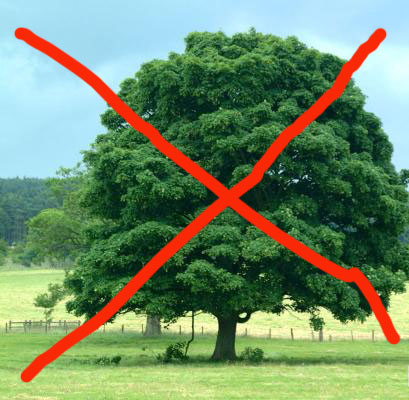
A tree doesn't grow in the Wisconsin Town of Westby in Vernon County (Unless a wind developer says it can)
Westby wind energy project gets green light (Click Here For Source)
WESTBY, WI A wind proposal in Westby, which could produce up to 100 percent of the energy needs for the city, is moving forward after the city council granted permits for the installation of three turbines.
Heartland Wind LLC will lease land from the city and Glen Stalsberg on a 1,300-foot elevated ridge on the west edge of the city, according to Curt Bjurlin, the project’s developer.
The initial project calls for the construction of three wind-generated turbines at a cost of $3 million to $4 million per unit, with construction anticipated to begin in 2009 or early 2010.
Heartland Wind will lease the property for 20 years, making payments of $1,000 annually per turbine site during construction phase and $6,000 annually per turbine once they are operational.
After the 20-year lease, expires the company may offer two five-year renewals for a possible total 30-year contract.
As part of the agreement, the city of Westby and the Stalsbergs will not be allowed to plant trees or construct buildings on the leased property because they could interfere with wind flow.
.SECOND FEATURE!
Same Circus, New Clown
Oil executive, natural gas lobbyist, and George W. Bush appointee becomes top CEO of the Amercian Wind Energy Association.
Gas and oil interests now openly in charge of American Wind Energy Association (click here for source)
Whose interests are being served? As many people have long pointed out, the industrial wind industry is not an alternative to but a symptom of big energy....
On Nov. 14, the the industry trade group American Wind Energy Association announced a new chief executive officer (CEO) to replace Randall Swisher after nearly 20 years: Denise Bode, who will take over in January.
Denise Bode has been the CEO of natural gas lobby American Clean Skies Foundation. Before that, she was president of Independent Petroleum Association of America and legal counsel to former Senator David Boren of Oklahoma, who sits on the board of Conoco Phillips.
She was appointed to George W. Bush's Energy Transition Advisory Team and has lectured at the Heritage Foundation and the Federalist Society.
NOTE FROM THE BPRC RESEARCH NERD: Why do big oil, big natural gas, and big coal-fired power plants all love big wind? What do they all have in common?
BIG MONEY.
Industrial scale wind turbines are the only renewable energy option which keeps us reliant on big thermal power plants. (In Wisconsin this means coal-fired plants) The reason? The 40 story tall turbines can't function without drawing electricity from the grid. If the grid goes down, they can't function. Until the wind hits a certain speed, they can actually use more electricity than they are producing. They need CO2 emitting power plants to operate. This is why the National Academy of Sciences found that big wind's ability to reduce current CO2 emissions is negligable. A Norwegian study of Danish wind power came to the same conclusion.
The big push for industrial scale wind has lead to deforestation of ridge tops all over the continent and the siting of turbines in bird and bat migration corridors and other protected areas of environmental importance.
These huge machines are notoriously inefficient. Fond du Lac county's newest wind farm operated at just 17.5% of capacity in the last quarter.
So where is the profit for the developers? Here's where big wind and big oil meet as equals: BIG MONEY. Big government subsidies made up of our tax dollars foot the bill.
The American Wind Energy Association, a wind lobbying organization, has long been seen as a wolf in green clothing by many who are concerned with the environment. Industrial scale wind energy is the only "green" enegy option that does not reduce CO2 emissions, requires destruction and fragmentation of natural habitat, and is so inefficient and unreliable that additional thermal fired power plants must be built to back it up.
So, given the amount of money involved, and the amount of property developers have grabbed up from unsuspecting farmers, it does not surprise us at all that the American Wind Energy Association has now chosen a new chief executive officer who is a Bush appointee with long roots in the oil and natural gas business. We'd love to know what sort of salary she is getting, and who is paying it.
Same Circus, New Clown.
11/16/08 BPRC SPOTLIGHT: TOWN OF FREEDOM. OUTAGAMIE COUNTY, WI

BPRC PROPOSED WIND FARM SITE SPOTLIGHT
Know anyone in Wisconsin's Outgamie County? Know anyone who lives near the town of Freedom? If you do, why not call them up and ask them if they know that wind developers have been prospecting in their area, and have proposed putting up 400 foot turbines in the following places:(Click on the zoom-in tool on the left side of the map to see exactly where the turbines might go)
11/15/08 Knock, Knock. Who's There? It's A Wind Developer Offering You A "Good Neighbor" Agreement!



WIND TURBINE CONFIDENTIAL
STRANGER A-COMIN'!
The phone rings or there is a knock on the door.
It's a wind developer telling you your neighbor is going to be hosting some wind turbines on his property. Your neighbor has already signed on. All your neighbors have. It's a done deal.
The developer says he's there with a good neighbor agreement. A contract which offers you a thousand dollars a year for any inconvenience the turbines may cause you. A thousand dollars a year for up to 40 years. It's free money for you and your family. You don't have to do a thing except to give up your right to complain and agree to abide by a confidentiality agreement, also known as a "gag order".
In Madison last winter, a Wisconsin dairy farmer testifying against wind turbine siting reform and said people who signed these contracts felt scared to talk about the troubles the turbines are causing them. "Those contracts have gag orders. What good has ever come out of a gag order?"
What are you signing away when you sign a good neighbor agreement?
This article scratches the surface of what people are really giving up when they sign a contract with a wind developer.
Developer offers deal for neighbors
June 28, 2008 by Joshua Niziolkiewicz in Lincoln Courier
As a way of compensating residents who live near the construction of wind turbines, but are not participants, Horizon Wind Energy has developed a Wind Farm Neighbor Easement Agreement.
The document outlines an agreement in which Horizon will allow for payments to landowners living near the immediate vicinity of turbines, in exchange for "an easement, right and entitlement on, over, across and under owner's property for any sound level (audible or otherwise) in excess of 50 decibels ..."
The Illinois Pollution Control Board recommends that people not be consistently exposed to noise levels over 40 decibels. Since the turbines can generate in excess of this amount, the agreement will pay $1,000 annually to property owners for the next 30 years with a 2 percent annual increase in the payments.
The agreement also states that if a shadow is cast over a property owner's residence, due to the height of the turbines, Horizon may "undertake measures such as tree planting or installation of awnings, draperies or other window treatments necessary to mitigate the effects of the offending shadow."
Horizon also states it will test television reception and make an attempt to correct weakened signals caused by nearby turbines.
"Correction measures may include ... installation of television signal boosters serving the general area of the wind farm, installation of an antenna or signal booster or installation and payment for cable, dish TV or similar devices serving owner's property."
Horizon's project manager Bill Whitlock said each property owner would likely see more than $40,000 over the life of the agreement.
"The owner agreement stays with the land," said Whitlock. "If the owner moves, the agreement (will be passed on to the new owner)."
The easement agreement also contains a confidentiality clause, which states, "The owner shall not disclose to others ... the terms of this easement agreement."
Rick Porter, attorney for opposition group Union Ridge Wind, said he would advise his clients to not sign the agreement. Porter said the agreement gives Horizon the right to infringe on the residents' properties.
Porter also designed his own "neighbor agreement." The main difference between Porter's and Horizon's draft, according to Union Ridge Wind's members, includes a property value guarantee.
"If a property owner wants to move, this will guarantee the value of the property (prior to the construction of the turbines)," said Glenn Folger, member of URW. "It doesn't cost the county anything, and if what Horizon says is true about property values not decreasing because of the turbines, it won't cost them anything either."
When Porter asked Whitlock in cross-examination if Horizon would consider agreeing to the property value guarantee, Whitlock said, "No. There's no property value loss."
"Then there's no detriment to your company," replied Porter.
When Logan County Board Chairman Dick Logan was asked if the county would consider asking Horizon to guarantee these residents' property values, Logan said he would leave the matter to the lawyers and the zoning board of appeals.
"I don't get involved in the legal stuff," said Logan.
NOTE FROM THE BPRC RESEARCH NERD: We'll be posting more about wind development contracts and good neighbor agreements in the upcoming weeks. If you have a wind development contract you would like to share with us, CLICK HERE. All submissions will be kept confidential. We've been collecting contracts from wind developers to compare the terms of the leases. The BPRC Contract Nerd asks me to thank those who have made their contracts available to us.

